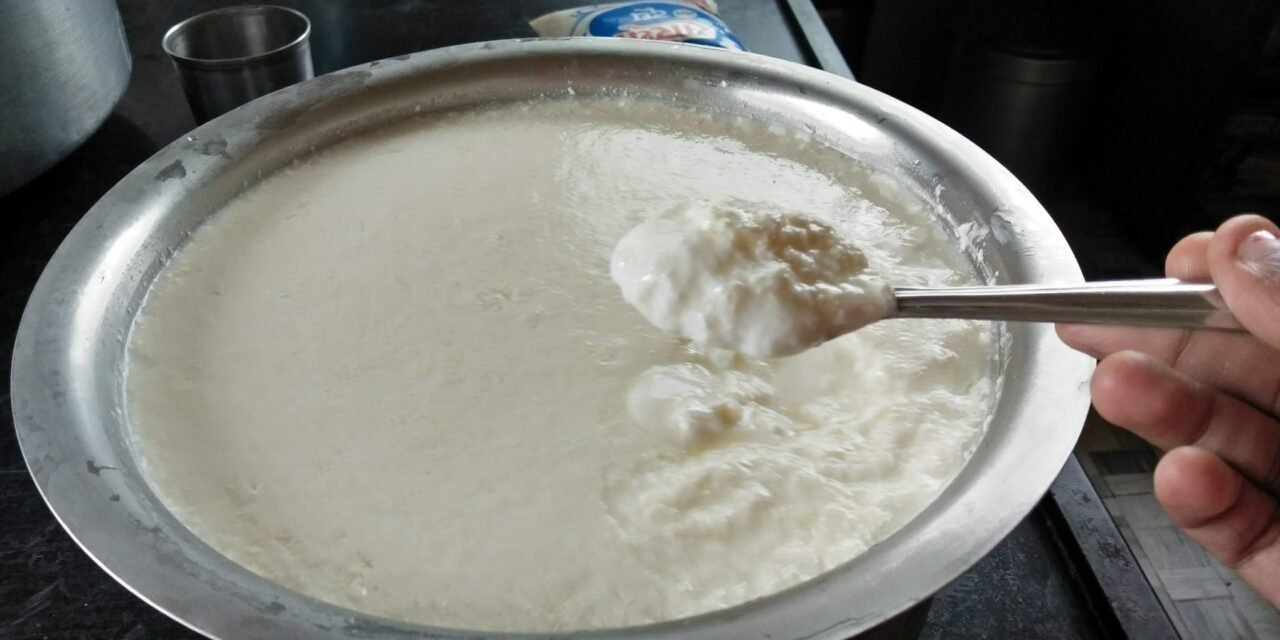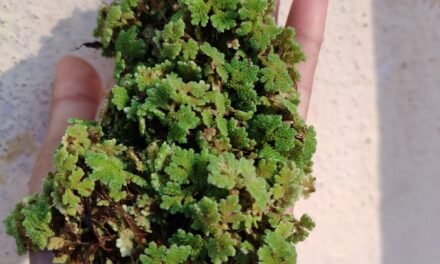Objective:
There is problem in curd formation in Ashram’s kitchen. The objective of this to understand the problem behind it and resolve it and help to ashram’s kitchen for curd formulation.
Introduction :
Curd is a food obtained through the fermentation of milk by lactic acid bacteria (Lactobacillus sp.) and which promotes the several health benefits. This is source of protein, Potassium, Calcium, Iron, Magnesium and vitamin B12. Curd contains live bacteria, known as probiotics, that can help promote healthy gut bacteria and improve digestive function.
Problem:
In ashram, “Dahi ” is prepared from cow’s milk on daily basis for lunch but from some days curd was not good in taste and consistency. It becomes sticky and flowy in consistency, sometimes too much sour and sometimes it’s taste like milky.
The milk used for curd formation purchased from local milk producer farmers, its SNF, Fat percentage was unknown. and in ashram; chemicals which used for detecting milk adulteration (neutralizers) are not available. and the culture used for curd fermentation purchased from local market; microbial count in this is unknown.
Procedure for “Curd” used in kitchen :
Cow’s milk
↓
Boiling of milk
↓
Cooling up to lukewarm
↓
Addiction of culture (curd) into milk [ 300 gm curd/ 7 liters of milk
↓
Incubation in incubator for 2-3 hrs. at 40 0 C
↓
Curd
Fig. Flow chart of curd formation in Ashram’s kitchen
Causative factors behind sticky / flowy and milky curd should be :
1.Milk:
i. Low fat.
ii.Low Total Solids.
iii. Adulterated with water
iv. Adulterated with neutralizers like sodium hydroxide (which inhibit the growth of microbes in milk).
v. Low acidity due to mastitis .
2. Culture :
i. Contaminated with other bacteria like Staphylococcus
ii. Low lactobacillus count
iii. percent of culture used in curd formation
3. Time and Temperature
4. Contamination during incubation ( Fermentation may be homolactic or heterolactic )
Test and Experiments :
1.For milk :
a) Coagulation test :
I was taking 100 ml of milk for coagulation test. Boil it and add 2% of citric acid into boiled milk. You can use acetic acid instead of citric acid.
Result: Milk gets coagulated. it concluded that milk had no problem to fermentation.
b) Titrable acidity of milk :
Titrable acidity (natural and developed acidity) of milk indicates the percentage of lactic acid in milk. The titrable acidity of cow milk varies on an average from 0.13 to 0.14 % and buffalo milk from 0.14 to 0.15 %.
I carried out the titration of milk sample at 12pm, collected from ashram’s kitchen. I took the 10 ml of milk sample into the beaker and added 10 ml of distilled water in it ; titrate with 0.1N NaOH solution , phenolphthalein indicator
Titrable acidity is calculated by following formula:
Titrable Acidity = Burette reading x Eq. wt. of lactic acid / volume of milk sample x 100
(AOAC 1984)
| Sample | Volume used | Burette Reading | Mean | Titrable Acidity | ||
| Initial | Final | Difference | ||||
| Milk | 10 ml | 0.0 | 1.7 | 1.7 | ||
| 0.0 | 1.6 | 1.6 | 1.7 | 0.15 | ||
| 0.0 | 1.8 | 1.8 |
Result : Milk samples titrable acidity is normal (0.15%)
Fig. Titration of milk

C) Curd formation:
I had carried out 2 trials of curd formation in food lab ; one using kitchen’s milk and second with packed market milk. I was used same culture for that.
#First trial using Kitchen’s milk:
250 ml of milk (Kitchen’s milk)
↓
Boiling
↓
Cooling up to Lukewarm (40-45 degree)
↓
Addition of culture (30 g)
↓
Incubation (overnight at Room Temperature)
Fig. Curd formation using kitchen’s milk
Result : Curd was good in taste, colour and consistency.
#Second Trial using packed market milk:
250 ml of milk (Packed market milk)
↓
Boiling
↓
Cooling up to Lukewarm (40-45 degree)
↓
Addition of culture (30g)
↓
Incubation (Overnight at Room temperature)
Fig. Curd Formation using market milk.
Result : Curd was good in taste, colour and consistency.
These tests were concluded that, the milk used for curd formation was good quality.
2. For culture:
The culture used for curd formation is purchased from local market; may be contaminated with other bacteria or it may have sticky or flowy consistency.
I had carried out 2 experimental trials.
#First trial with same culture (used in kitchen):
250 ml of milk from kitchen
↓
Boiling
↓
Cooling up to lukewarm (40 -45 degree)
↓
Addition of culture (30g) (same culture used in kitchen)
↓
Incubation (Overnight at Room temperature)
Fig. Curd formation trial using same culture.
Result : Good quality of curd was formed from this culture
#Second trial with market culture (market curd):
250 ml of milk from kitchen
↓
Boiling
↓
Cooling up to lukewarm (40-45 degree)
↓
Addition of culture (30g) (market curd)
↓
Incubation (Overnight at Room Temperature)
Fig. Curd formation trial using market curd (market culture)
Result: Good quality of curd was prepared using market culture (market curd)
3. For Temperature and Time:
From above two tests, it concluded that there was no problem in milk and culture we used for curd formation in Ashram’s kitchen.
Temperature and time of incubation is one of the most important factor which affects on curd formation. In ashram’s curd formation we used 40-45 degrees temperature on incubator for 2-3 hrs. On display of incubator; temperature was 48.3 degree. I reverified it using mercury thermometer but I observed that the actual temperature of incubator was 63 degrees.


Difference between temp. of display and thermometer
63 degree is the temperature of milk pasteurization (Low Temperature Long Time Pasteurization). At this temperature Lactobacillus bacteria can’t survive, which is useful for curd formation.
Then we prepare the curd by traditional method on daily basis in kitchen. The prepared curd is of good quality in terms of taste, consistency, etc.

Fig. Curd prepared in kitchen by traditional method.
Corrective Actions :
Remark:
From above tests and observed data; it is concluded that, there were problem in electric incubator we used for curd formation in ashram’s kitchen.
For this correctives action will take by fab lab department and repair the time and temperature controller of incubator which is used for curd formation.





